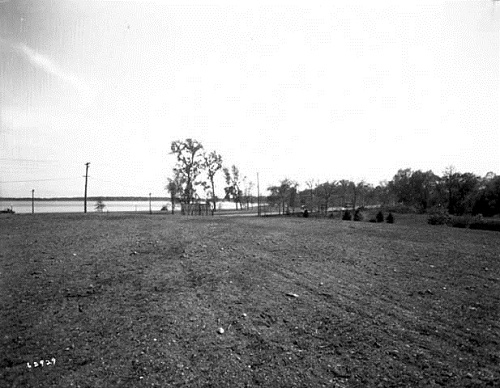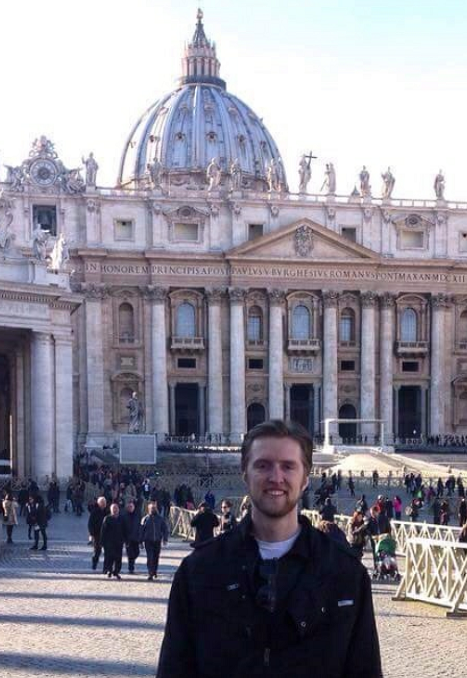The Calhoun Beach Club
 Friday, September 14, 2018 at 2:54PM |
Friday, September 14, 2018 at 2:54PM |  Michael Rainville Jr |
Michael Rainville Jr | Article by Michael Rainville, Jr.
The 1920’s was one of Minneapolis’ most successful decades. Buildings for business and residential use were popping up left and right as the city’s population went from roughly 380,000 to 464,000, which sounds an awful lot like this city in the 2010’s. Minneapolis was, and is, a bustling city. With people working long work days and tending to their families, the need to unwind and relax also grew. Social and athletic clubs were being established to cater to these needs, such as the Minneapolis Club, the Minneapolis Athletic Club, and the Minikahda Club. However, these clubs were very exclusive and were mainly for the city’s elite. Well what about those who couldn’t afford those high membership fees? This is were the Calhoun Beach Club comes in.
 The future site of the Calhoun Beach Club as it appeared in 1926.
The future site of the Calhoun Beach Club as it appeared in 1926.
Harry Goldie, a former featherweight boxing champion and boxing instructor at the University of Minnesota, operated a boxing camp on the site of the soon-to-be Club in 1916. Throughout the years he would acquire more parcels of land around his camp, and in 1923 he had the idea to build the Calhoun Beach Club, an apartment hotel with space for an athletic club. During the next few years, Goldie would welcome more business partners, such as Earle Buell, an editor at the Minneapolis Star, and they would look for buyers for their club’s membership. To get the ball rolling, they gave honorary memberships to Babe Ruth, Charles Lindbergh, and French tennis champion Suzanne Lenglen. Soon after in June of 1927, a groundbreaking ceremony for their eight-story building took place. The cornerstone was laid in 1928, with the inscription "Dedicated to Healthful Recreation, A. D. 1928.” Construction continued for over a year until the stock market crashed, and the Great Depression halted any more work on the building.
 The beach and Beach Club, 1940.
The beach and Beach Club, 1940.
 The building in 1944.
The building in 1944.
Harry Goldie would have to wait for WWII to come to a finish, and seventeen years later, in 1946, his Calhoun Beach Club & Apartments would officially open. His dream of having a social and recreational club that was affordable for the growing minority and working-class populations of Minneapolis came to fruition. The club lasted nearly a decade, but the financial burden was too much, and the building was transitioned to a hotel. During this time, the Calhoun Beach Club hosted many proms, parties, banquets, and wedding receptions. WTCN, now known as KARE, also had their radio and TV studios on the second and third floors of the building complex. These studios saw popular shows taped there, such as Lunch with Casey and Verne Gagne’s AWA All Star Wrestling.
In 1976, the building was sold to Robert Mecoy and Gary Benson, who hired Arvid Elness, Architects, Inc. to transform the building back into its original intended purpose as an athletic club. The swimming pool reopened, the radio and TV studios were renovated back into a gymnasium, the handball and squash courts were restored, and an outdoor tennis court, saunas, and a jogging track were also added. A couple decades later, Mecoy and Benson constructed a twelve-story apartment building adjacent to the Club in 1997, and soon after, the original Calhoun Beach Club began a restoration process and was converted back into apartments.
For almost 70 years, the Calhoun Beach Club has not only added to the beauty of the Grand Rounds and chain of lakes, but it also has served as a focal point for recreational and social events for thousands of Minneapolitans. From weddings to wrestling, the Calhoun Beach Club has seen it all.
- - - - - - - - - - - - - - - - - - - - - - - - - - - - - - - - - - - - - -
 About Michael Rainville, Jr.
About Michael Rainville, Jr.
A 6th generation Minneapolitan, Michael Rainville Jr. received his B.A. in History from the University of St. Thomas, and is currently enrolled in their M.A. in Art History and Certificate in Museum Studies programs.
Michael is also a lead guide at Mobile Entertainment LLC, giving Segway tours of the Minneapolis riverfront for 5+ years.
He can be reached at mrainvillejr@comcast.net.
